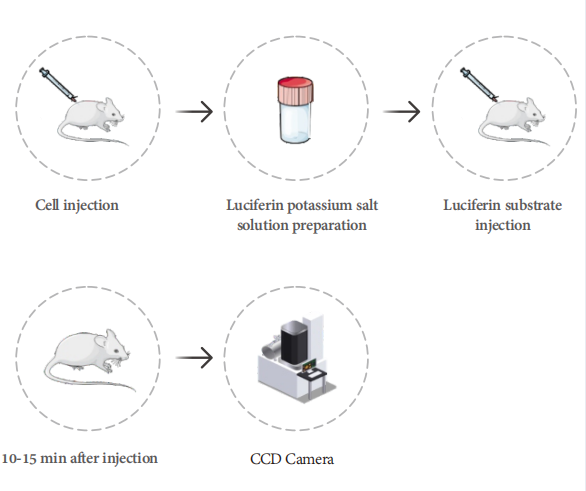
The luminescence produced by the reaction of luciferase with luciferin substrate is mostly used in bioluminescence imaging. The use of luciferase gene to label cells and the detection of fluorescence intensity after injection of luciferase substrate allow real-time monitoring of the growth of target cells and the drug medication effect. Since ATP is also involved in the fluorescence reaction, the effect of ATP on the system can also be introduced to indicate energy or life state.

Properties:
Product Application:
Procedures for use in vivo imaging:


Order Imformations:
Cat.NO. Name Size CY057F0025 D-luciferin potassium salt 25mg CY057F0100 D-luciferin potassium salt 0.1g CY057F1000 D-luciferin potassium salt 1 g
A:The purity of D-fluorescein potassium salt is ≥ 99%. The higher the purity of fluorescein, the lower the corresponding pollutant content. On the contrary, the higher the concentration. Excessive concentration of pollutants will inhibit certain enzymes and biological processes in cells, which may lead to deviation in experimental results and may cause harm to experimental animals.
A:The solubility of D-fluorescein potassium salt is above 40 mg/ml, and its aqueous solution is stored at -80 ℃ for a short period of time, which has no significant impact on the experimental results. For experiments that are sensitive to certain conditions, in order to control the variable factors in the experiment, it is recommended to prepare the reaction solution fresh. For example, low luciferase levels and non optimal reaction conditions require high-quality substrates for the reaction.
Tips: The injection method, animal type, and weight can all affect signal emission. It is necessary to explore appropriately and wait for the fluorescence signal to reach the strongest stable plateau period before using corresponding instruments for imaging analysis.